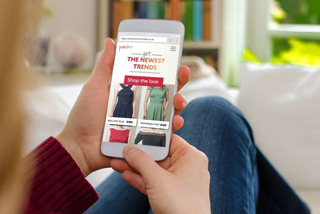
How Everyday Funding can improve cash flow

Digital trends poised to reshape hotel payments

Healthcare organizations have historically used multiple software solutions and technology platforms to collect and process information. Because these solutions aren’t built to work together, they create information gaps and workflow redundancies.
As healthcare evolves to become more human-centered, efficient, and accessible, payment integration is critical to ensure your system can securely and effectively share and process medical records, billing, and payment data securely and effectively. Here are some of the benefits of integrated payments in the healthcare space:
While streamlining communication among all your technology platforms increases your system’s ability to operate efficiently, compliance is another reason it’s critical. In 2020, the Centers for Medicare & Medicaid Services implemented a rule that requires organizations to share healthcare information with patients electronically via application programming interface (API) technology. Its goal is to give patients simple, instant access to their vital medical information on their smartphones, tablet, or computer and reduce the burden on payers and providers.
Evolving healthcare to work for consumers, as well as providers, is paramount. A recent Deloitte Insights1 article argues that “consumer-centric care and interoperability are the keys to success” in the future of healthcare.
By integrating your payment solution with your business and clinical systems, you’ll ensure your system is compliant and benefit from seamless communication with your technology stack. With payments connected to appointment booking and electronic health records (EHR) systems, staff will spend less time reconciling various platforms and entering information manually and have more time to focus on tasks that improve the patient experience.
Integrated payments allow healthcare staff to access patient and payment data all in one convenient place. This allows staff to engage with patients more effectively since an integrated payment solution can suggest scripts and prompts tailored to individual patient needs.
With quick access to combined payment and patient data, providers can quickly provide clear and consistent information about common patient questions and offer services that improve the consumer experience. From paying for care at the time of service to providing recurring payment options and prompt-pay discounts to help manage high medical costs, healthcare systems can help make the patient journey more straightforward and affordable. Providers can also securely keep the patient’s card on file for future or remote payments and schedule payments for recurring appointments like physical therapy or dialysis.
Our 2021 survey of U.S. healthcare consumers found that most patients appreciate options for managing their financial responsibility. According to our research, 46% are highly likely to take advantage of a lump-sum bill discount, while 59% of consumers are extremely likely to choose recurring bill payments.
By streamlining communication around these services and payment options, patients can spend less time worrying about how they will pay for a visit and more time asking questions related to care and treatment -- boosting patient satisfaction and improving health outcomes.
An integrated payment solution offers convenient payment options, from self-serve kiosks to email, so providers can offer the innovative payment methods patients want. Consumers already use digital payment options like mobile apps, contactless mobile wallets, and pay by text in everyday life, and they expect that flexibility from their healthcare providers, too.
Since digital payment touchpoints create more opportunities for patients to pay, they’re more likely to pay on time. Patients enjoy digital payments because it lets them integrate paying their bills into other healthcare activities. For example, they can pay for their previous visit while checking-in for their current appointment at the self-serve kiosk or pay via the online patient portal when they book an appointment or request a prescription refill.
The pandemic created an instant demand for telemedicine, and patients were quick to adapt to easy, accessible, personalized virtual visits. Many healthcare systems launched standalone telemedicine platforms to meet rising demand during the pandemic. Post-pandemic, integrating telehealth workflows with existing EHR and patient payment systems helps deliver a consistent payment experience to patients and staff.
Giving in-person and telehealth patients one place to access all their payment and billing information reduces miscommunication and confusion. By ensuring digital payment options are available on telehealth platforms, health systems can maximize the convenience of a virtual visit to patients.2
Payment integration allows healthcare providers to standardize payment acceptance and create efficiencies across the revenue cycle. From data integrations to embedded workflow integrations U.S. Bank offers solutions to securely connect payments to your existing EHR and patient accounting systems.
Learn more about our Healthcare Payment Solutions or contact us to speak with a healthcare payments consultant.
Tyler Eppley is the vice president of healthcare payment solutions at U.S. Bank and has worked exclusively with providers for more than 15 years to optimize revenue cycle operations and improve the patient experience.
Related content


